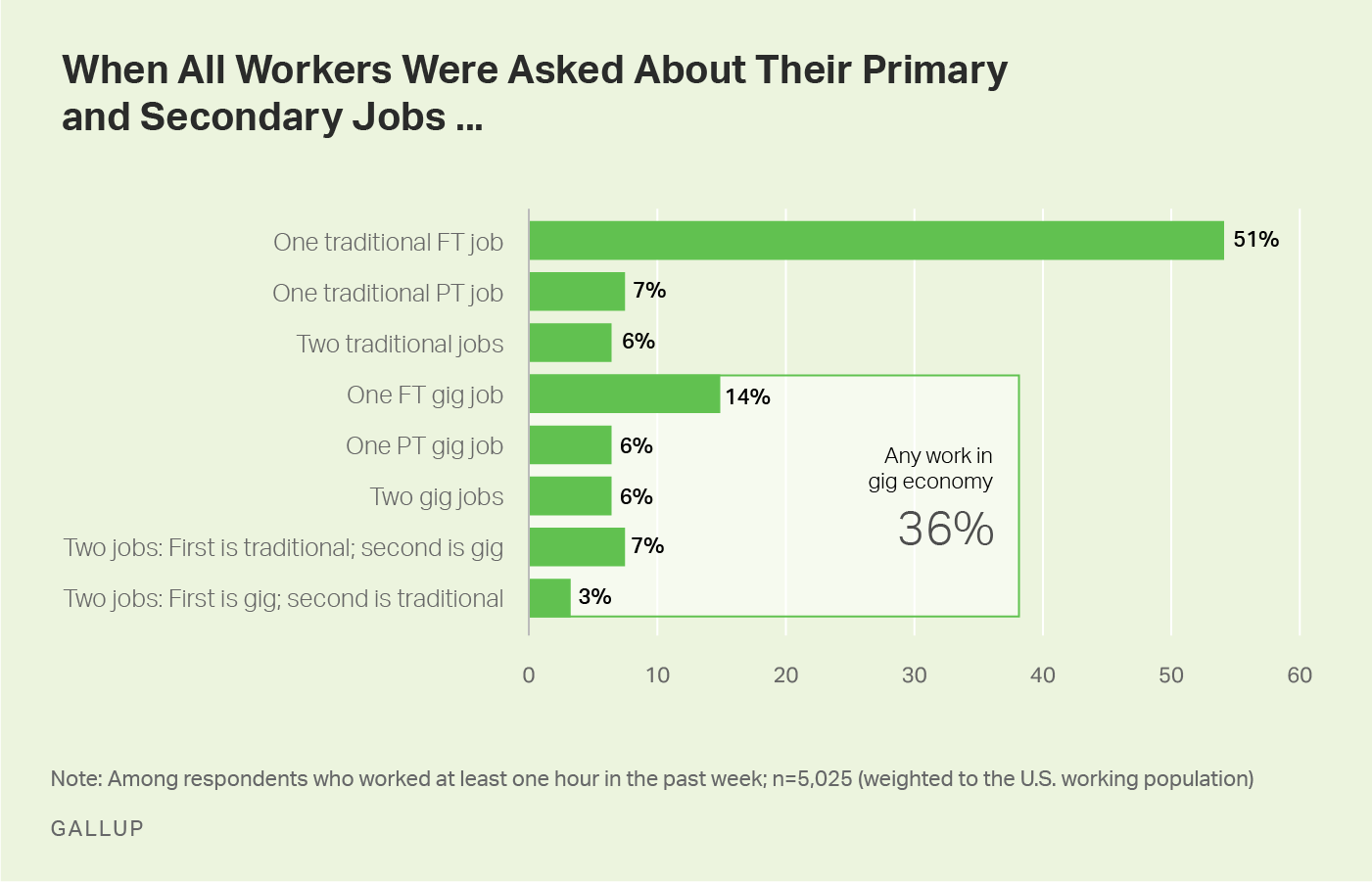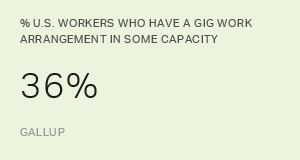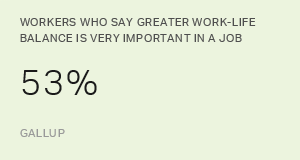Story Highlights
- 36% of all workers today are connected to the gig economy in some way
- Leaders are turning to gig workers to create more flexible workforces
- Organizations can employ specific strategies to benefit from gig work
Your organization may be competing with the gig economy in more ways than you think.
According to Gallup's perspective paper, The Gig Economy and Alternative Work Arrangements, 36% of all workers today are connected to the gig economy in some way.
Although most American workers still have one full-time, traditional job working for one employer, Gallup data suggest as many as one in 10 workers split their time and talents between their traditional employer and their gig work.
At the same time, paradoxically, organizational leaders are turning toward gig workers and contractors to create a more flexible, efficient and agile workforce.
The reality is that more organizations than you think are influenced by alternative work arrangements in complex but hidden ways. And it's time for HR leaders to start thinking more strategically about their long-term position when it comes to this trend.
So how can leaders ensure they capitalize on (and don't compete with) the gig economy?

1. Develop a strategic plan for alternative work arrangements.
Too often, HR leaders resort to contracted service or independent contractors when they are in a crunch or to reduce labor costs. Many large organizations are likely unaware of the extent to which their operations are supported by alternative workers.
A more intentional use of gig labor ensures that projects and positions are aligned with your broader approach to human capital management. Organizational leaders need to have a clear acquisition, onboarding, and account leadership approach to manage and retain the best gig workers.
2. Know the "ABCs" of worker classification.
The legal landscape of worker classification is constantly in flux. A recent decision from the California Supreme Court would apply an "ABC" test to determine worker classification status. This decision would require that gig workers be only used for "work that is outside the usual course of the hiring entity's business."
Misclassifying employees as contract workers can result in serious financial consequences. Therefore, before exploring alternative work arrangements in your organization, it is important to carefully consider the roles, tasks and types of work arrangements needed.
3. Give your current workforce what they need -- flexibility.
Gallup research indicates that some gig workers are attracted to the increased flexibility and autonomy of these work arrangements. We also found that many are doing this part time or as a "side gig" in addition to their "9 to 5." There is no doubt that organizations are competing for talent with contract and independent work.
According to Gallup's State of the American Workplace report, 53% of all employees say a role that allows for a greater work-life balance is "very important" when considering job alternatives. For leaders to compete against the gig economy and retain talent, they must support flexibility in work arrangements and scheduling to allow for greater work-life balance for those who need it.
4. Find managers who can facilitate collaboration across diverse teams.
Organizational workgroups and the cross-functional teamwork that multifaceted projects necessitate are becoming more even complex with remote workers, matrixed team members and gig workers. Though less frequent than is the case for traditional employees, Gallup still found a majority of gig workers work on teams.
In these diverse team contexts, project management, knowledge transfer, and team communication become paramount to getting work done right and efficiently. It takes a strong manager to coordinate these diverse teams, set clear goals, and regularly evaluate team progress toward those objectives. Are managers in your organization prepared to orchestrate the teamwork required for the future?
5. Create internal gig work for more agile teams.
The gig economy enables HR leaders to scale up or down their workforce according to seasonality, workflow, project and customer demand. Independent contractors have long provided niche expertise to organizations for help with complex tasks or in a crunch.
However, organizations can also capitalize on the talent they already have in-house. For instance, consider an internal gig platform of projects for employees who have valuable skills outside of their "9 to 5." It might provide employees with a "side gig" without requiring that they join an app.
It is mutually beneficial when the organizational need for a flexible workforce is teamed with workers' needs for work-life balance.
6. Consider gig worker experiences throughout their lifecycle.
Like all employees, gig workers have some basic needs when they go to work each day. They need to know what is expected of them at work. They need to understand how things are done in your company. They need to feel like their work is appreciated and that they are contributing to your organizational goals.
By studying the experiences of workers with alternative arrangements in your organization, HR leaders are better able to evaluate their strategy and course correct. When a project using gig workers goes smoothly, identify the key behaviors and processes related to resourcing, onboarding, teamwork and management that contributed to the success.
7. Ask gig workers for their opinions, and make them count.
The simplest way to understand what the perceptions, needs, and experiences of both traditional employees and gig workers in your organization are is to ask them. If you want to retain the talented and high performing human capital in your workforce, it is critical to keep in touch with their needs, goals and experiences.
Consider administering a pulse survey to understand gig workers' unique opinions, needs and expectations when it comes to your organization.
Clearly, the gig economy and the technology that enables this type of work are creating changes in the workplace. Leaders who are actively learning about the gig economy are better positioned to use these workplace trends to meet the needs of workers and their organizations.



